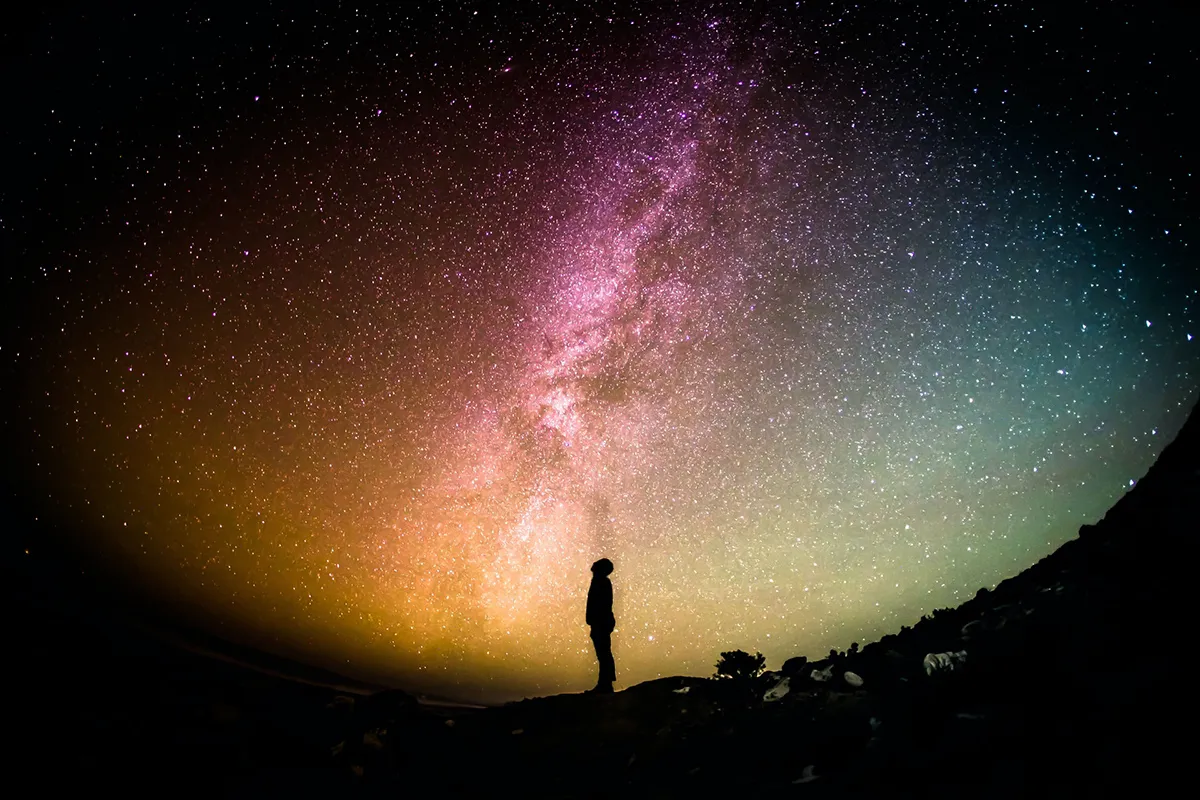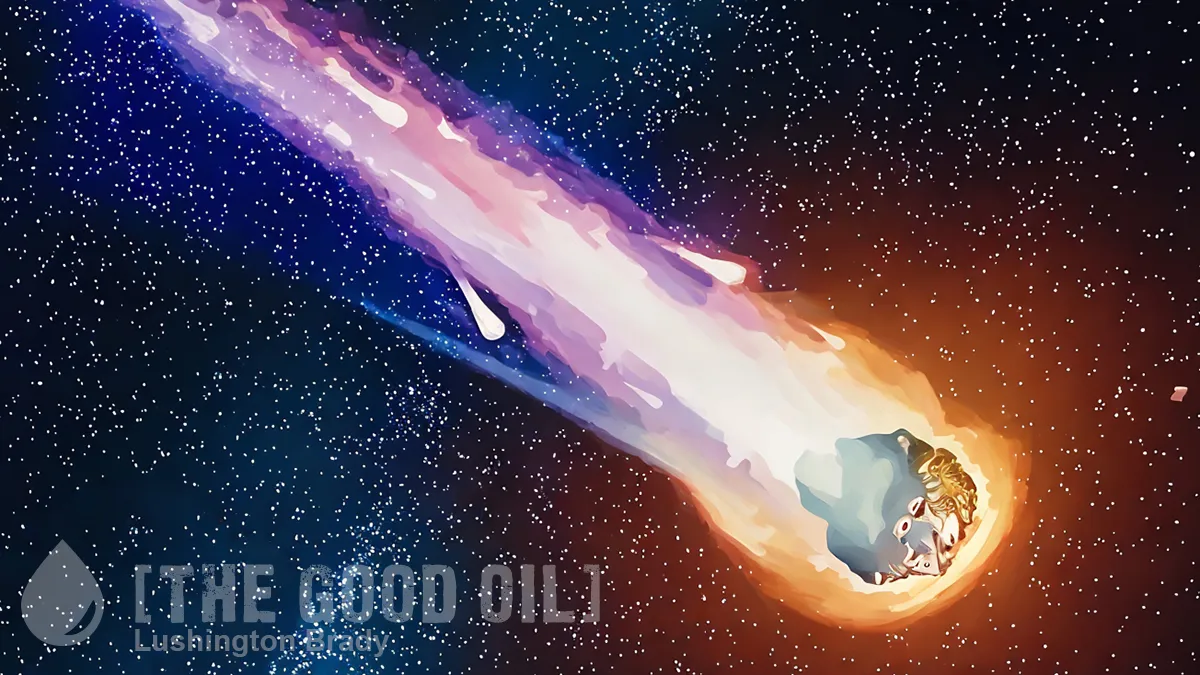There are some must-see events unfolding in our skies in 2024. Unfortunately, for those in the Southern Hemisphere, some of them won’t be seen, such as the upcoming total solar eclipse over North America. Still, there are a few night-sky spectaculars coming up for us southerners.
If you’re willing to get up just before dawn on 8 April, you’ll see Venus making a close approach to the Moon. At a slightly more tolerable hour, on the night of 27 June, the Moon will occlude the planet Saturn: Saturn will disappear behind the Moon at roughly 10:55pm AEST, so probably nudging midnight in New Zealand. It will reappear nearly an hour later.
The planet Mercury is rarely seen as, being so close to the Sun, it’s only ever visible at sunset or sunrise. On 9 May, it will be visible just above the eastern horizon from about 5am.
Comets are notoriously fickle celestial events. Kahoutek in 1973 was predicted to be the “comet of the century” and bright enough to see in full daylight. It was an even bigger fizzer than Halley’s Comet in 1986. So, let’s be cautiously optimistic about the newly discovered Tsuchinshan-ATLAS. With an orbital period of tens of thousands of years, it’s unlikely any of us will get another chance.
Discovered independently by astronomers at Purple Mountain Observatory in China and the Asteroid Terrestrial-impact Last Alert System, ATLAS, the comet is currently between the orbits of Jupiter and Saturn, a billion kilometres from Earth. It is falling inwards, moving on an orbit that will bring it to within 59 million kilometres of the Sun in September 2024.
The fact the comet was found while it’s so far away is part of the reason for astronomers’ excitement. Although currently some 60,000 times too faint to see with the naked eye, the comet is bright for something so far from the Sun. And observations suggest it’s following an orbit that could allow it to become truly spectacular.
Historically, the vast majority of the brightest, most spectacular comets have followed orbits that brought them closer to the Sun than Earth’s orbit. The closer, the better, and Tsuchinshan-ATLAS certainly ticks that box.
In fact, this new comet seems to tick all the boxes. It appears to have a sizeable nucleus, making it brighter (bright enough to be discovered so far from the Sun). It is destined to have a very close encounter with our star. And, the kicker, it will then pass almost directly between Earth and the Sun, approaching within 70 million kilometres of us just two weeks after perihelion (the closest approach to the Sun). The closer a comet comes to Earth, the brighter it will appear to us.
But comets, as comet hunter David H Levy (of Shoemaker-Levy comet fame) said, are like cats: they have tails, and they do precisely what they want. Kahoutek turned out to be a first-timer passing the Sun, which meant that it quickly boiled off its coat of volatile ice while it was still far out in the Solar System. By the time it got close enough to see, its subsequent brightness was already fading. In 2020, comet C/2020 F8 (SWAN) was looking promising – until it broke apart on approach to the Sun and faded away.
Tsuchinshan-ATLAS is still an unknown quantity.
It could brighten more than expected – which would make for an amazing sight in the morning sky in late September and early October 2024, and an even better one in the evening sky in mid-October 2024.
The Conversation
A rarer and more exciting stellar event could happen any time between now and September: a nova outburst visible to the naked eye. This is a slightly unusual nova, in that it’s a periodic event.
The star system offering us this opportunity is known as T Coronae Borealis (T CrB). It’s located some 3,000 light-years away from Earth and consists of a red giant star and a white dwarf that orbit each other. When the white dwarf steals enough stellar material from its red giant companion, it ignites a brief flash of nuclear fusion on its surface, triggering what is known as a nova outburst.
The outburst will be visible in the constellation Corona Borealis, also known as the Northern Crown, which forms a semicircle of stars. The outburst is expected to occur between February and September 2024 and appear as bright as the North Star in our night sky for no longer than a week before fading again, NASA officials said in a statement.
As its name suggests, Corona Borealis is mostly a Northern Hemisphere constellation. Still, depending on the time of year, the star will be just above our northern horizon of the night sky.
“This could be a once-in-a-lifetime viewing opportunity as the nova outburst only occurs about every 80 years,” NASA officials said in the statement.
This recurrent nova, which last exploded in 1946, is just one of five observed within the Milky Way galaxy. To spot the outburst, viewers should point their gaze to Corona Borealis, which lies between the constellations Boötes and Hercules. The outburst will appear as a bright “new” star in the night sky.
Generally, these binary stars have a magnitude of +10, which is far too dim to see with the unaided eye. However, during the outburst, the stellar system will have a magnitude of +2, which is comparable to the brightness of the North Star, Polaris, according to the statement.
The Pleiades, by comparison, have a magnitude of +1.46 (confusingly, the higher the number, the less bright the object: Sirius, the brightest star in the night sky has a magnitude of -1.46).
“Once its brightness peaks, it should be visible to the unaided eye for several days and just over a week with binoculars before it dims again, possibly for another 80 years,” NASA officials said.
Space.com
Here’s hoping this cosmic firecracker goes off at a time when we’ll be able to actually see it.








